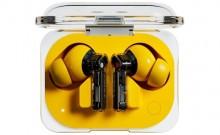
Japanese technology firm NS West has reportedly developed a prototype of a miniature PC, which is small enough to be placed in the human ear.
The tiny device has been named temporarily as 'Earclip-type wearable PC', as the product is still in the development stage. This visually appealing device resembles a hearing aid, inspired from the Ikebana - Japanese traditional flower arranging technique.
The device weighs just 17g and comes equipped with a gamut of internal hardware, such as microchip, inbuilt storage, Bluetooth, GPS radio, digital compass, gyro-sensor, barometer, speaker, microphone and a battery to power the device, making it more advanced than the current Google Glass project, which many view at the forefront of wearable technology.
Earclip PC is so sensitive that it can pick up minute facial expressions, be it the eyebrow movement, the tongue sticking of the mouth, grinding teeth or the wiggling of nose. It can convert those signals to perform action (while connected to compatible devices) without the need of hand.
Developers say that the device can serve as "a third hand" for everyone from caregivers to rock-climbers, motorbike riders to astronauts, as well as people with disabilities, reported AFP.
"Supposing I climb a mountain, look at the sky at night and see a bright star up there, it could tell me what it is. As it knows what altitude I'm at, which direction I'm looking and at what angle, it could tell me, The bright star you are seeing now is Sirius." said Kazuhiro Taniguchi, engineer Hiroshima City University.
Key features of 'Earclip-type wearable PC':
- Infrareds sensors can interpret minute facial changes to perform actions
- Also acts as hearing aid.
- Monitors health including user's pulse rate, body temperature. It can even register number of times he/she sneezes, how often the person eats and predicts onset of illness.
- Can be used to monitor old people. Accelerometer fitted in the device (second variant is under trial) can detect if the person falls on the ground and automatically the software triggers emergency system by activating the user's smartphone to shoot out messages to relatives and also call ambulance based on the GPS location.
- Is expected to be made compatible with iPod and other gadgets (smartphones and tablets) via application software.
As of now, the Earclip-type wearable PC is under trial at the Hiroshima City University, and is expected to be ready by 2015 Christmas and commercially be available by around April 2016.









